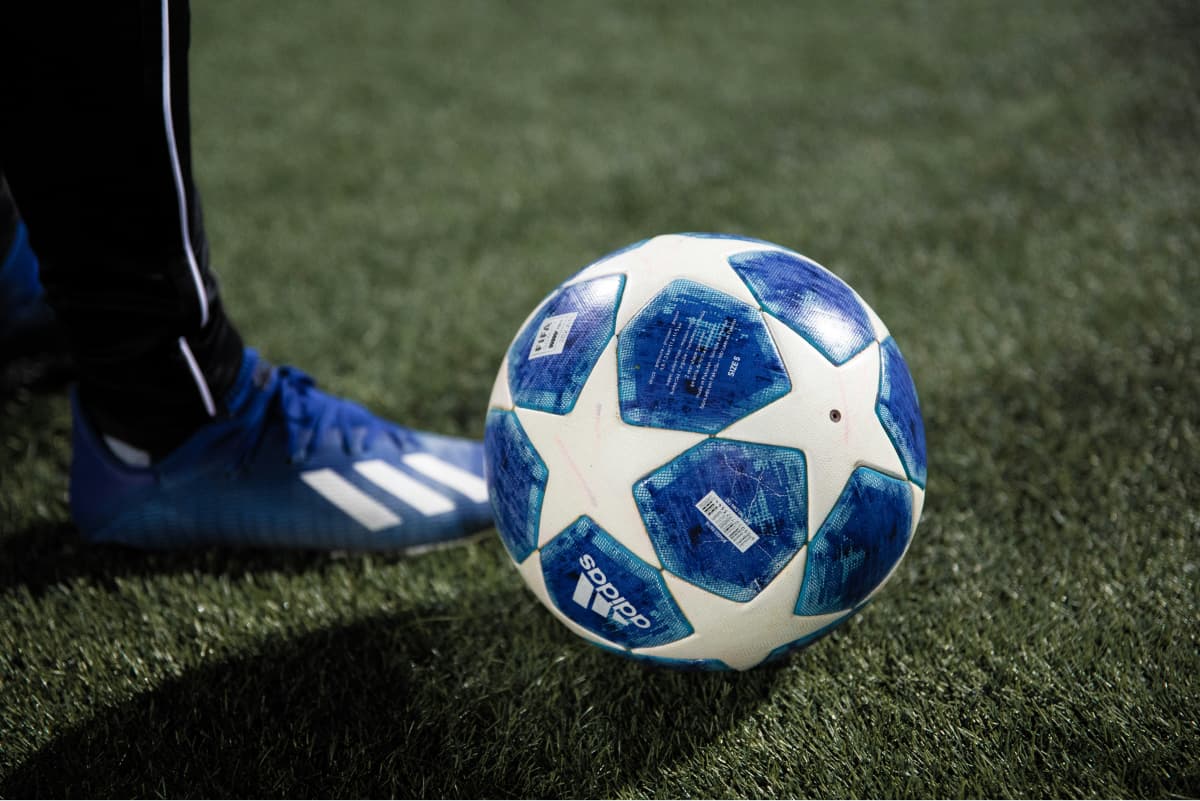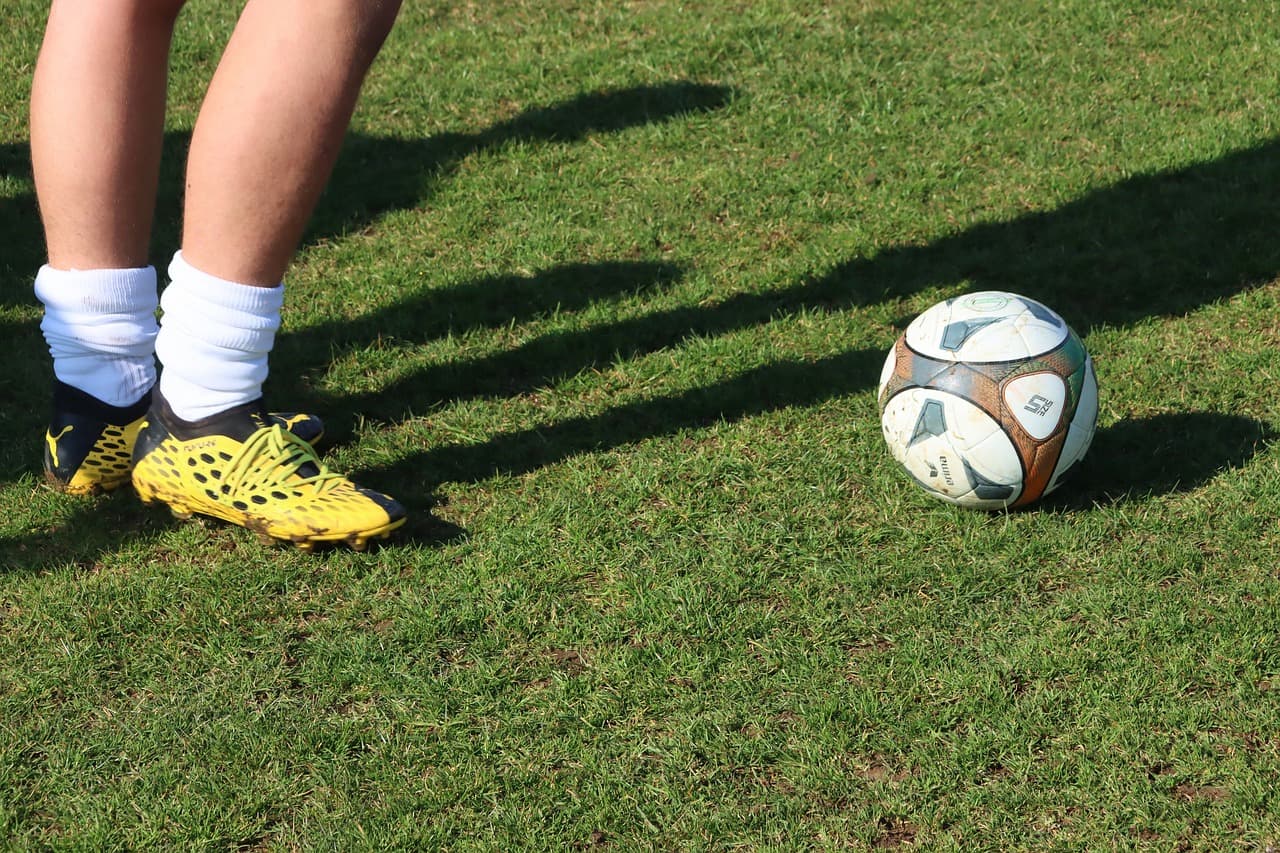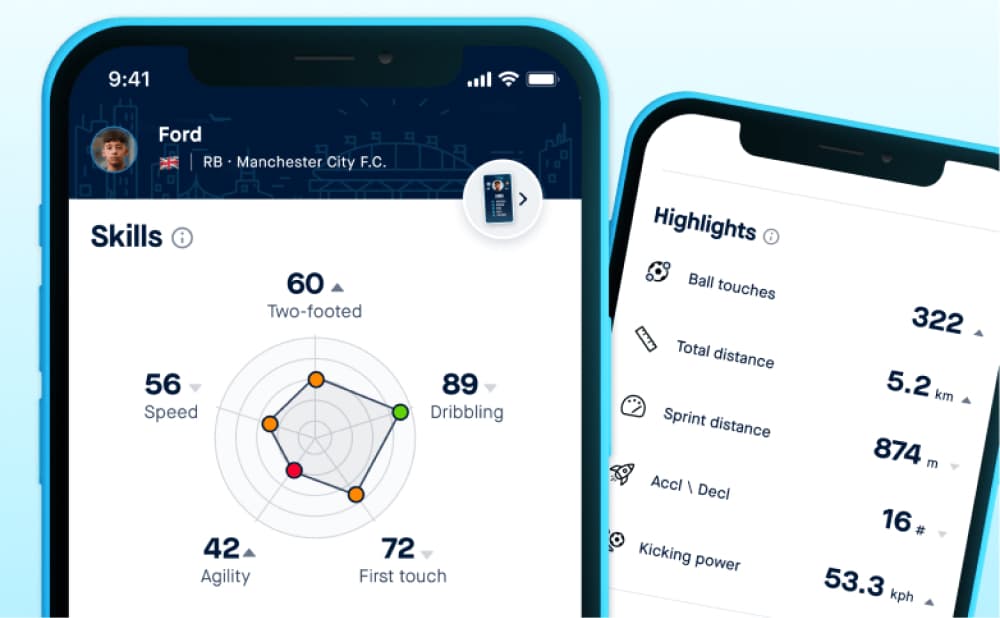The Striker’s Responsibilities on the Pitch
A striker is arguably the most important position on a soccer field. A striker’s role is to score goals, but the responsibilities and goals extend far beyond. You must be versatile by combining technical skills with tactical awareness to achieve success as a striker, helping you propel your team to victory.
Here are the 5 most critical responsibilities of a striker on the pitch:
1. Scoring Goals
Scoring goals is your top responsibility. You must be precise, powerful, and opportunistic by capitalizing on every chance. In turn, this requires a high level of technical ability, a sense of positioning, and the fortitude to remain calm.
Strikers often have to make split-second decisions and execute complex techniques like volleys, headers, and finishes.
2. Creating Opportunities
A top striker creates goals—not just scores them. For example, you can draw defenders away and create space for teammates by making intelligent runs and positioning yourself effectively.
This involves dropping deep, drifting wide to stretch the opposition, or making decoy runs to perplex defenders.
Creativity and vision are crucial in this role: you must anticipate the movement of your teammates and deliver passes or crosses to set up chances.
3. Link-Up Play
Link-up play combines midfielders and forwards to maintain possession and build attacks. You must play with your back to the goal, hold the ball under pressure, and lay it off to advancing teammates. For this, you’ll need ball control, strength, and the ability to shield the ball from defenders.
Moreover, effective link-up play helps create fluid attacking movement. It achieves this by allowing your team to advance up the pitch.
4. Counter Attack
As a striker, you’ll play a critical role in counter-attacks, where speed and decision-making are essential. For example, you must exploit spaces left by the opposition when they commit players forward by serving as the focal point for direct attacks.
Strikers can also be “Target Men” who hold up play for teammates to quickly counter-attack. Therefore, you must use your physical presence to win aerial duels, retain possession, and distribute the ball to onrushing teammates.
5. Pressing and Disrupting Opponent’s Defense
Modern strikers must initiate the team’s defensive efforts by pressing the defenders and goalkeeper. That involves closing down passing lanes, forcing errors, and preventing the opposition from building attacks comfortably.
Effective pressing also requires excellent fitness, tactical understanding, and the ability to read the game. You must also win back possession in dangerous areas and create immediate scoring opportunities by disrupting defenses.
How to Press and Disrupt the Opponent’s Defense?
Effective pressing involves closing down defenders quickly, anticipating their passes, and cutting off passing lanes. As a striker, you must communicate with teammates to coordinate pressing efforts and force the opposition into making mistakes.
What Skills Do You Need To Be A Striker?
Soccer strikers need a combination of the following six skills to be successful, which can take plenty of practice.
1. Shooting Power and Accuracy
To fulfill your role of scoring goals, you must have strong and accurate shooting abilities, including shooting with both feet from various distances and angles.
Accurate shooting allows you to capitalize on opportunities, but power ensures your shots are difficult for goalkeepers to save. Practicing different shots—such as driven shots, chips, and curlers—can also help you become more versatile.
2. Heading Ability
Heading is vital for strikers when crosses come into the box. Good heading ability allows you to score from aerial deliveries and compete effectively in set-piece situations, but it requires timing, technique, and physical strength.
Improving heading ability requires practicing timing, jumping technique, and accuracy. You should focus on meeting the ball at the highest point of the jump and directing headers with power and precision.
3. Ball Control
Excellent ball control is critical to retaining possession under pressure, executing precise dribbles, and creating scoring opportunities. This includes first touch, close control, and shielding the ball from defenders.
Strikers with exceptional ball control can navigate tight spaces, maintain possession, and set up their own or teammates’ scoring chances.
4. Movement and Positioning
Effective movement and positioning are critical for creating scoring opportunities and evading defenders. You should have spatial awareness by knowing when to make runs, where to position yourself in the box, and how to exploit defensive gaps.
You must also understand the timing and angles of runs, as well as anticipate the play’s development.
5. Great Physical Attributes
As a striker, you need a combination of pace, acceleration, strength, and agility to be successful. Speed allows you to outrun defenders and create space for yourself, but strength and agility help you win physical battles and maintain balance.
Handling physical defenders requires mixing strength, balance, and tactical intelligence. Strikers can work on their upper body strength and core stability to withstand physical challenges.
Additionally, body positioning and shielding techniques can help maintain possession under pressure.
6. Composure
Composure is crucial for strikers in high-pressure situations. You must remain calm and confident when presented with scoring opportunities; hesitation or anxiety can lead to missed chances.
Composure also allows you to make clear-headed decisions, execute techniques effectively, and maintain consistency in front of the goal.
Mental resilience is crucial due to the high-pressure nature of the role. You can develop it through regular mental training like visualization techniques, mindfulness exercises, and learning to stay focused and composed under pressure.
Do Strikers Need to Be Fast?
Yes. Speed is significant because it allows you to get past defenders and create space for yourself and your teammates.
For example, you must use speed and agility to outrun defenders, make penetrating runs, and exploit gaps in the opposition’s defense. Speed is one of the best weapons of a striker, making it a critical trait.
A striker without pace can still be effective with other skills. For instance, a player with exceptional positioning, ball control, and finishing ability can compensate for a lack of speed. Strength, tactical intelligence, and creativity can also make a slower striker highly effective.
That’s not to worry if you aren’t up to pace right now, there is a lot you can still do to improve your speed and pace on the pitch.
Different Striker Styles
Strikers come in various styles, each with unique attributes and roles within a team. That’s why understanding these styles can help you utilize your striker strengths effectively.
Here are three examples of striker styles:
1. Complete Striker
A complete striker is a player who excels in all aspects of the striker role. They combine physical, technical, and tactical skills, which makes them versatile and practical.
They can score with both feet, head the ball well, link up play, and press the opposition; their all-round abilities make them valuable assets to any football team.
2. Poacher
A poacher is a striker who specializes in scoring goals from close range. They have a keen sense of positioning, often finding themselves in the right place at the right time to capitalize on rebounds, deflections, and loose balls.
Poachers rely on sharp instincts, quick reactions, and finishing ability. They involve themselves in build-up play and are highly effective in the penalty box by turning half-chances into goals.
3. Target Man
A target man in soccer is a striker who uses their physical presence to hold up play, win aerial duels, and bring teammates into the game. Target men are often tall players—such as Harry Kane—who can shield the ball from defenders and act as a focal point for attacks.
This role is crucial for teams that play a direct soccer style, which utilizes the target man’s attributes to create scoring opportunities.
Common Striker Mistakes and How to Avoid Them
Even the best strikers can make mistakes. However, addressing these common errors can help strikers improve their performance and become more consistent.
Here are the three most common mistakes strikers make and how to avoid them:
1. Poor Decision Making
Poor decision-making can lead to missed opportunities and turnovers. To avoid this, you must assess situations quickly and make the best choices, whether taking a shot, passing to a teammate, or holding up the ball.
Improving decision-making skills involves practicing under game-like conditions, studying game footage, and learning from experienced players.
Simulating match scenarios during training can help you make quicker and more accurate decisions on the pitch—whether choosing when to shoot, pass, or hold up the ball.
2. Inconsistent Positioning
Inconsistent positioning can prevent strikers from being effective in the final third. Therefore, you must maintain awareness of your surroundings, stay onside, and position yourself to receive passes and create scoring chances.
Practicing positioning drills, studying game footage, and receiving feedback can help strikers improve their spatial awareness and positioning.
3. Being Caught Offside
Being caught offside too frequently can disrupt attacking momentum and frustrate teammates. As such, you must understand the offside rule and learn to time their runs effectively.
Practicing timing and communication with teammates can reduce the frequency of offside calls and improve overall attacking efficiency.
Using Playermaker To Track Your Striker Journey From Beginner To Pro
Playermaker is a smart soccer tracker that helps you monitor progress and improve your soccer skills.
Playermaker collects data on various aspects of a player’s performance—including speed, distance covered, touches, and positional heat maps.
Our technology can also provide valuable insights into your movement patterns, shooting accuracy, and link-up play as a striker, so you can track your strengths and weaknesses to see where you can improve and where your skills shine.








